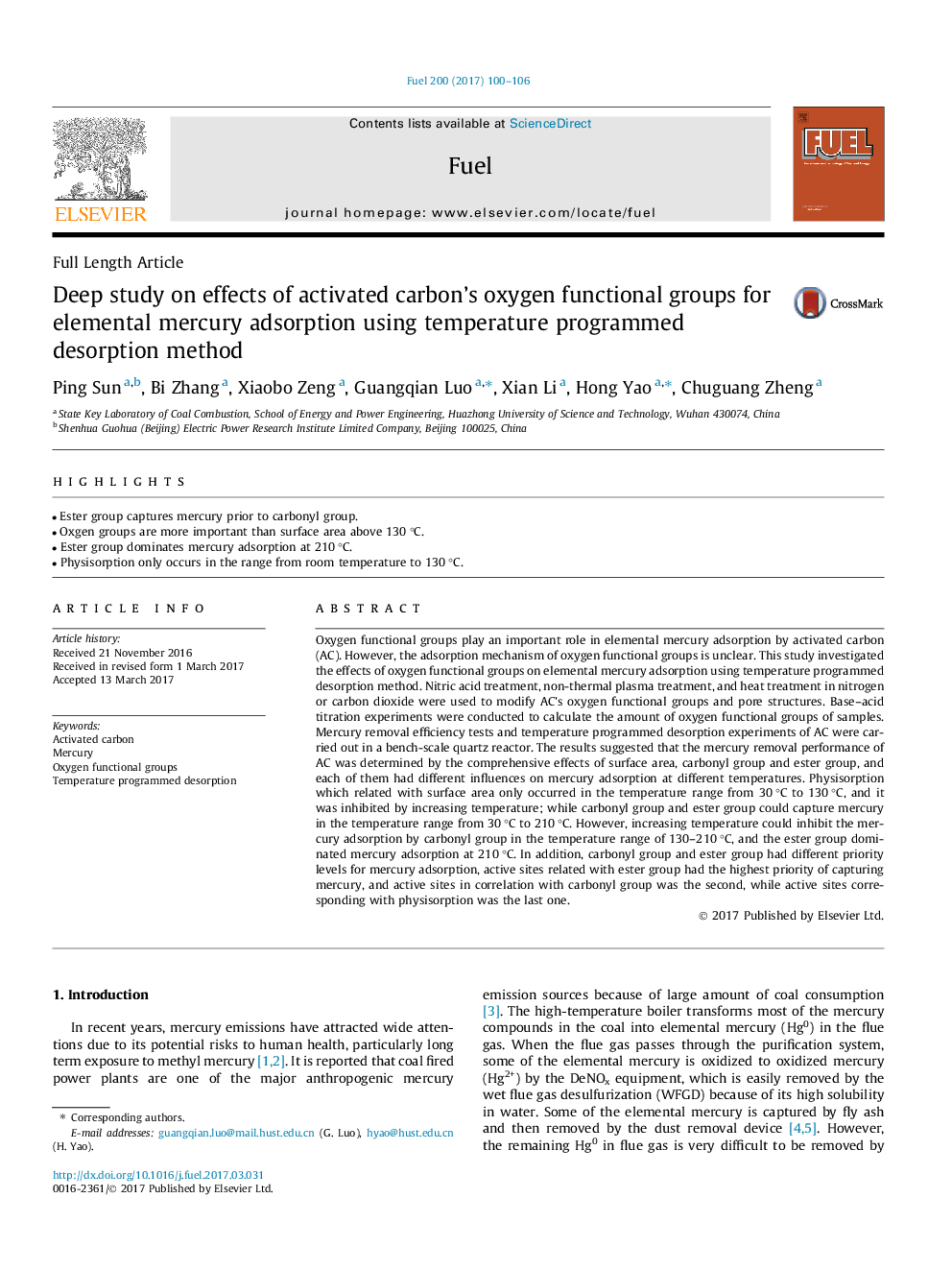| کد مقاله | کد نشریه | سال انتشار | مقاله انگلیسی | نسخه تمام متن |
|---|---|---|---|---|
| 6473693 | 1424964 | 2017 | 7 صفحه PDF | دانلود رایگان |
عنوان انگلیسی مقاله ISI
Deep study on effects of activated carbon's oxygen functional groups for elemental mercury adsorption using temperature programmed desorption method
ترجمه فارسی عنوان
بررسی عمق اثر گروه های اکسیژن فعال کربن فعال برای جذب جیوه عنصری با استفاده از روش تخلیه برنامه ریزی شده درجه حرارت
دانلود مقاله + سفارش ترجمه
دانلود مقاله ISI انگلیسی
رایگان برای ایرانیان
کلمات کلیدی
کربن فعال، جیوه، گروه های فعال اکسیژن، درجه حرارت برنامه ریزی شده،
موضوعات مرتبط
مهندسی و علوم پایه
مهندسی شیمی
مهندسی شیمی (عمومی)
چکیده انگلیسی
Oxygen functional groups play an important role in elemental mercury adsorption by activated carbon (AC). However, the adsorption mechanism of oxygen functional groups is unclear. This study investigated the effects of oxygen functional groups on elemental mercury adsorption using temperature programmed desorption method. Nitric acid treatment, non-thermal plasma treatment, and heat treatment in nitrogen or carbon dioxide were used to modify AC's oxygen functional groups and pore structures. Base-acid titration experiments were conducted to calculate the amount of oxygen functional groups of samples. Mercury removal efficiency tests and temperature programmed desorption experiments of AC were carried out in a bench-scale quartz reactor. The results suggested that the mercury removal performance of AC was determined by the comprehensive effects of surface area, carbonyl group and ester group, and each of them had different influences on mercury adsorption at different temperatures. Physisorption which related with surface area only occurred in the temperature range from 30 °C to 130 °C, and it was inhibited by increasing temperature; while carbonyl group and ester group could capture mercury in the temperature range from 30 °C to 210 °C. However, increasing temperature could inhibit the mercury adsorption by carbonyl group in the temperature range of 130-210 °C, and the ester group dominated mercury adsorption at 210 °C. In addition, carbonyl group and ester group had different priority levels for mercury adsorption, active sites related with ester group had the highest priority of capturing mercury, and active sites in correlation with carbonyl group was the second, while active sites corresponding with physisorption was the last one.
ناشر
Database: Elsevier - ScienceDirect (ساینس دایرکت)
Journal: Fuel - Volume 200, 15 July 2017, Pages 100-106
Journal: Fuel - Volume 200, 15 July 2017, Pages 100-106
نویسندگان
Ping Sun, Bi Zhang, Xiaobo Zeng, Guangqian Luo, Xian Li, Hong Yao, Chuguang Zheng,
